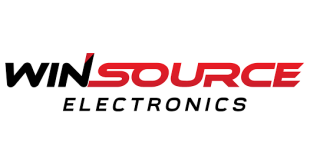 Silicon Labs has introduced a new family of universal digital video broadcast (DVB) demodulators designed to support worldwide DVB standards for cable, terrestrial and satellite reception. Designed to simplify the design of complex, high-performance video front-ends for integrated digital TVs (iDTVs) and set-top boxes (STBs), the new Si216x/6×2 family includes the industry’s first dual-channel DVB demodulators targeting multi-receiver iDTV and STB applications.
Silicon Labs has introduced a new family of universal digital video broadcast (DVB) demodulators designed to support worldwide DVB standards for cable, terrestrial and satellite reception. Designed to simplify the design of complex, high-performance video front-ends for integrated digital TVs (iDTVs) and set-top boxes (STBs), the new Si216x/6×2 family includes the industry’s first dual-channel DVB demodulators targeting multi-receiver iDTV and STB applications.
The Si216x/6×2 demodulator family supports all first and second-generation DVB broadcast standards for cable (DVB-C2/C, ITU J.83 Annex A/B/C), terrestrial (DVB-T2/T) and satellite (DVB-S2/S, DSS) and by leveraging the company’s digital demodulation architecture, the single-channel Si216x and dual-channel Si216x2 demodulators are able to provide impressive reception performance for each DVB standard while at the same time reducing front-end design complexity, footprint size, system cost and power dissipation.
For TV and STB makers looking to add additional features like personal video recorder (PVR) and picture-in-picture, multiple demodulators are essential components.
The family includes single and dual demodulators that comply with the recent DVB-C2 specification for cable reception enabling highly efficient use of existing cable networks for delivery of innovative new services such as video-on-demand (VOD) and high-definition television (HDTV). The rapidly emerging DVB-C2 standard is increasingly important in the German TV market and is also becoming a “must-have” feature for the broader European market. High-end TVs designed for European consumers have begun supporting DVB-C2, and this trend will continue to accelerate. Many of Western Europe’s leading cable operators, representing more than 22 million households, have chosen to adopt the new DVB-C2 standard.
The Si216x/6×2 family supports the latest DVB-T2 specification (ETSI EN 302 755-V1.3.1), also known as DVB-T2-Lite. New markets that are migrating to digital terrestrial TV broadcasting are switching directly from analogue to DVB-T2-Lite. DVB-T2 adoption continues to expand to various African countries, as well as Singapore, Russia, India, Malaysia and Colombia. .
The DVB-T2-Lite specification allows simpler receiver implementations for mobile and handheld reception. Additionally, the specification enables “scrambling of L1 post-signalling,” an attractive feature for new DVB-T2 infrastructure deployments that reduces the cost of the power amplifier in the broadcast transmitter. Emerging countries recently deploying DVB-T2 have implemented these lower cost transmitters. Legacy DVB-T2 demodulators that do not support DVB-T2-Lite will not be able to receive T2-Lite broadcasts. Therefore, it is important that TV and STB makers use a demodulator that supports DVB-T2-Lite to address the global terrestrial broadcast market.
Silicon Labs’ Si216x/6×2 family is designed to reduce demodulator lock times across the DVB-C2/C/T2/T/S2/S standards. The new demodulators demonstrate very short lock times in DVB-C2 mode, and they provide the industry’s fastest DVB-T2 lock times, even in the presence of co-channel interference (CCI), which is an important consideration in countries where DVB-T2 and analogue broadcasting coexist. Fast lock time is a critical feature for TV and STB makers since it enables shorter “zapping” time (the speed of changing channels), an attractive consumer experience feature for TV viewers. Noticeably long zap time can be irritating for TV viewers while very fast zapping can be a key performance consideration and differentiator when selecting a new TV or STB in the retail market.
 CIE Components in Electronics
CIE Components in Electronics



